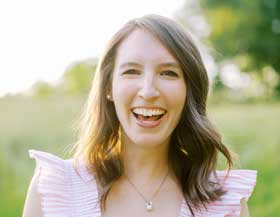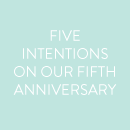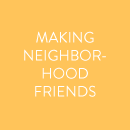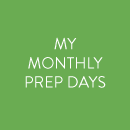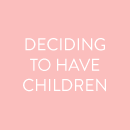14 June 2019
I’ve shared before some of my Dad’s parenting one-liner gems. His oft-repeated phrases formed the background of my character development, and I am so grateful for that! Paul David Tripp writes that “parenting is about the willingness to live a life of long-term, intentional repetition,” and my Dad was more than willing.
As I became a parent, I fully expected to pick up the mantel of his favorite phrases and impart his wisdom to a new generation – and I have. What I didn’t expect was that these phrases would still be growing and changing me, years and years after I first heard them, years after you’d expect I might have wrung every drop of goodness from them.
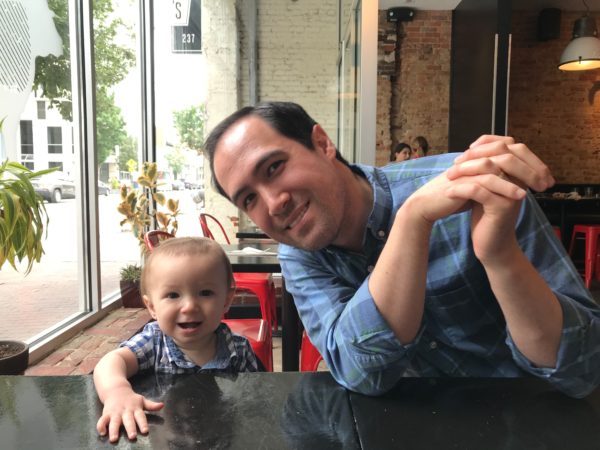
One in particular I’ve been thinking about a lot lately. My Dad would often admonish us, “if you’re going to give, give graciously.” In childhood, this meant that it wasn’t enough to simply shove a coloring book across the table at my sister if I begrudgingly agreed to relinquish it; no, I was supposed to politely (graciously) place it in her hands, ideally with a smile. Our parents were not often satisfied with the bare minimum, and they definitely weren’t satisfied until our hearts were in the right place.
These days, I am the parent, and as the parent, many requests are made of me by a certain little girl. Another pancake? One more book? Can we go outside to draw with chalk? Can we go upstairs? Can you play with me? Can you draw with me? Can you carry me??? Sometimes there’s a clear yes or no to these kinds of requests, and that’s that.
But often, it’s up to me. A year or so ago, I found myself often frustrated, saying yes but only begrudgingly. Feeling over a barrel, I’d huff out an acquiescence before tossing the pancake onto the plate or the chalk into her hand with a harrumph. June usually seemed indifferent to my attitude, but I immediately felt the sting of it. Not only did I feel like my child was getting something over on me (never a pleasant feeling), but I realized I was robbing myself of one of the best parts of parenthood: delighting my child by giving her good gifts. And for what? Usually, the no was simply reflexive and not rooted in any particular reasoning beyond my own agenda.
Thinking back to my Dad’s phrase, I retrained myself to pause for a beat when faced with a request. Was there a real reason to say no? I’d say a gentle but firm no and stick to it. No good reason to say no? I’d say a wholehearted yes, and fully enjoy the glee that followed. I let my yes be yes and my no be no.
And now I get the gift of saying with a smile, yes, let’s have another pancake.
Thanks, Dad. Happy Father’s Day to you and to all the wonderful dads out there. xoxo
11 June 2019
Back at it! We’ll continue with the Q&A format in the next post in this series, but today I wanted to cover gear: what we reused, what we had to buy, and my best recommendations for equipping your family for a second child!
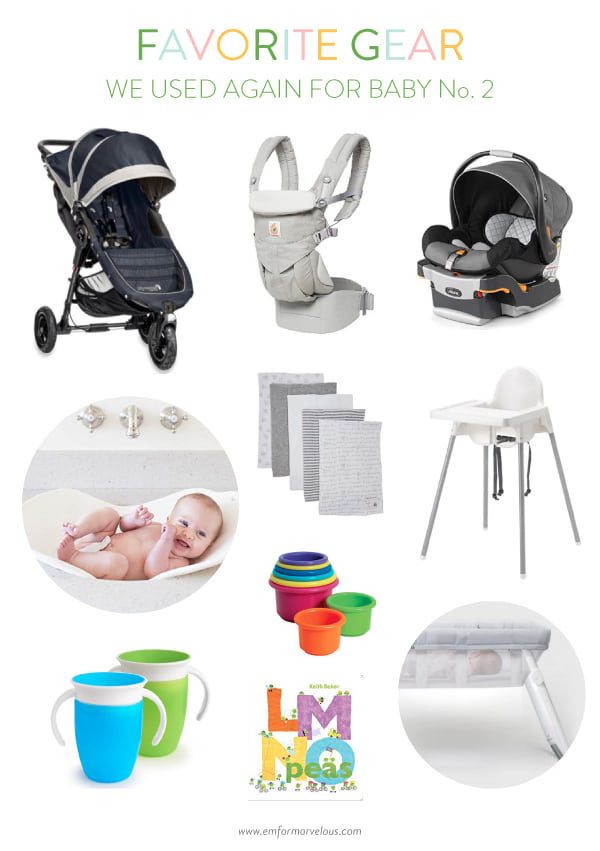
First up: what we reused for baby number two. Answer: almost everything! We used the same infant car seat and base, carrier, high chair, bumbo, activity mat, and the exact same burp cloths. The Rays again lent us their Puj tub for the first few months.
One of our biggest questions was whether we’d need a double stroller, and for our family, the answer has been a definite no. (June was 2.5 when Shep arrived, for reference.) We used our same stroller, adding a glider board for June. She doesn’t use it that much, though, preferring to use her scooter or just run! :)
We also reused our Rock and Play (which has since been recalled, but wasn’t at the time Shep was sleeping in it). Shep moved from the R&P to the Lotus Bassinet after a few months, which we also used and loved with June.
And of course, we’ve trotted out the same toys, books, spoons/cups/containers and more that we collected the first time around. We’re still using the same diaper bag, and I’m still using the same nursing cover.
Onto what we bought for baby number 2! A number of the items were duplicates of ones we already had, and a few were brand new…
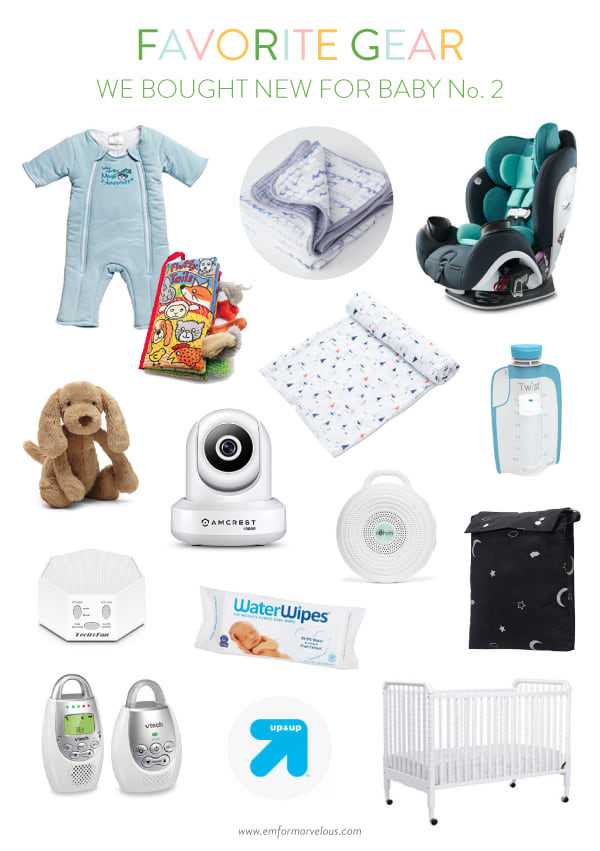
We bought or were gifted a few special items, including a soft quilt, a silky swaddle (will be his blanket when he gets older!), a Jellycat of his own, and a scrunchy book (he LOVES this toy!).
We purchased a number of items for his nursery, including a crib. We technically could have gotten by without buying a second crib, because Shep hadn’t yet moved to his room when June moved to her big girl bed, but June’s crib was already a hand-me-down and getting a little rickety. John’s parents surprised us with Shep’s crib, making the decision easy!
We bought duplicates of a few beloved items, including another Amcrest camera and white noise machine (we got this portable one to use at school). We also again stocked up on Water Wipes, Up & Up diapers, these swaddles, and Kiinde bags.
Other new items this time around included this sound-only monitor, travel black-out curtains (genius!), a convertible car seat, and a Magic Merlin suit.
A note about that last one: when June began to roll and we needed to transition her out of the SwaddleMe swaddles, I was expecting it to be terrible but it was totally fine: she just flipped onto her stomach and was happy as a clam. Shep, on the other hand, had the ability to roll, but seemed to forget about that ability when he was in the bassinet and stuck on his back – so he would just wail and flail. I took to the internet in desperation, and landed on the Magic Merlin suit. It is THE most ridiculous-looking contraption (baby sumo suit!) and ridiculously expensive (borrow it if you can!), but it was exactly what we needed to smooth the transition.
The Merlin suit is safe to wear when babies can roll, since their arms are out, but since it’s padded, it stifles the startle reflex and gives them the feeling of compression they’re looking for. We only used this suit for about a month (you’re supposed to discontinue use once they’re consistently rolling over in it), but it was so helpful for that brief period!
Finally, we did buy a few items of clothing to fill in the gaps here and there, but, as with June, the lion’s share of Shep’s wardrobe was on loan from my older sister, who has a baby boy almost exactly two years older than Shep. Between our two kids, Kate’s generous loans have literally saved us thousands of dollars, and I am so grateful!!
Any more gear questions? I’m happy to answer! Or, anyone else out there who used the Merlin and giggled every time their child was zipped into it? :)
Previously:
Transitioning from 1 to 2 Kiddos, Part One
29 May 2019
I welcomed your questions about our transition from one to two kids on Instagram, and you gals didn’t hold back – in fact, there were so many that I’m going to break them up into several posts! Today, we’re talking all things pre-arrival and the first few days.
As always, remember that this is just one family’s experience, and we certainly don’t have everything figured out. I hope something here might be helpful for you as you navigate growing your own family!
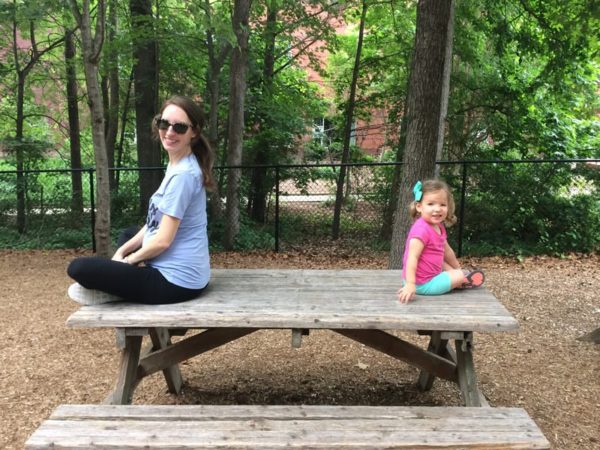
How did you know you were ready for a second kiddo?
Though it took us awhile to decide we were ready for our first, there was no question about jumping back in a second time – it was more a matter of choosing the right timing. When we decided to have one baby, we were basically deciding to have (at least) two.
In terms of timing, I was hoping to be pregnant by June’s second birthday, and I was. I’ve read that 2-3 years is actually the hardest gap for developing sibling relationships (1 year and 4/5 years are statistically better, apparently), but 2-3 felt right for us, and besides, I think there are more salient factors than the number of years in determining the quality of a sibling relationship! I liked that June would be walking and talking by the time a sibling arrived, but not so set in her only child status that a sibling would be an incredibly-jarring adjustment.
I was also keeping in mind the cyclical nature of my work and hoping to time a birth for a lighter time of year. Of course, the content of my work changed radically while all of this was happening, so that didn’t end up being much of a factor in the end.
Finally, John was hoping for a summer baby, and it’s fun how things ended up working out – Shepherd (July 31st) is slotted into a heavy lineup of family summer birthdays, including his uncle (July 1st), his Daddy (July 15th), his cousin (July 30th), and his Pop-Pop (August 7th). I love that we will almost certainly celebrate his birthday on the Island some years, which is a special kind of magic!

How did you help June with the transition to big sister? Any suggested reading?
We started talking about the baby more as my belly began to be more noticeable – just talking about how he was coming and that we were excited and that she was going to be such a great big sister. We talked about how he was going to be a part of our family and would be our baby. We’d also talk a lot about other friends her age who had siblings to help her connect his arrival to something concrete.
People would often ask us whether June knew what was happening, which was hard to answer. She was a young two for most of the lead-up (she was 2.5 when Shep was born), and so many things went over her head. She certainly told people she was going to have a brother, but I don’t think she really knew what that meant.
We read a few books – When You Were a Baby and How To Be a Baby were two favorites – but I’m not sure what effect they had on preparing her for her new role!
This is a kind of indirect answer, but I think the biggest ways we helped June prepare to be a big sister started long before I was pregnant. Helping her to develop patience and the ability to play independently, disavowing her of the idea that the world revolves around her and that she’ll always get her way, and growing in her a desire to be a helper (which I think most toddlers naturally have!) all made WAY more of a difference in the transition than talking about what the baby was going to be like or reading a book.
Overall, June has never been particularly interested in babies (takes after her mama :)), so we kept things low-key. Since his arrival she has always been accepting of him, but typically more interested in her own activities or thoughts – ha! (Shep, however, has been OBSESSED with her from the start, and they love to make each other laugh!)

Did you try to potty train before Shep’s arrival?
We did – kind of? Potty training was an ongoing process for us :) Our pediatrician had recommended 2.5 as a good age to try, which of course was exactly when Shep was scheduled to arrive. After seeing her cousin use the potty on vacation in June, June was motivated, so we rolled with it a little early. I would say we were still very much in the midst of training by the time Shep arrived, but it wasn’t a bad thing – we were mostly hanging around at home, so the bathroom was nearby and accidents weren’t a huge disruption.
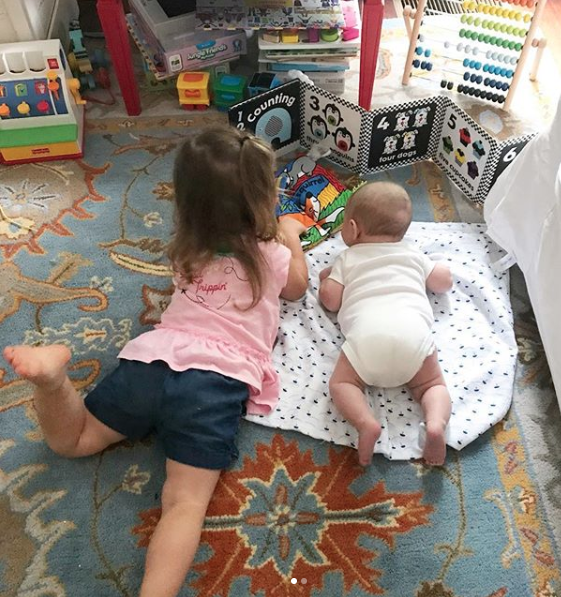
How did you transition June to her big girl bed?
June is a GREAT sleeper, and I had NO desire to rock that boat when we were also getting up overnight with a newborn. She didn’t show any signs of climbing out of her crib until the end of September, so that’s when we made the switch. We tested the waters by having her sleep on a toddler inflatable mattress while on vacation, and just told her not to get out of the bed. Aaaaaand… it worked! My biggest concern was that she would immediately start walking around the room, but I had heard from many friends that their kids just didn’t, and June was the same.
When we got back from vacation, we made a big deal about sleeping in her “big girl princess bed” and she was excited to do so. She helped us disassemble the crib and move over her twin bed (it had been in her room since birth, which maybe helped – no jarring new piece of furniture!). Her bed is pretty high (we use this bumper), which I think has helped to dissuade her from getting in and out – she can, but it’s not as easy as just sticking a foot over the edge.
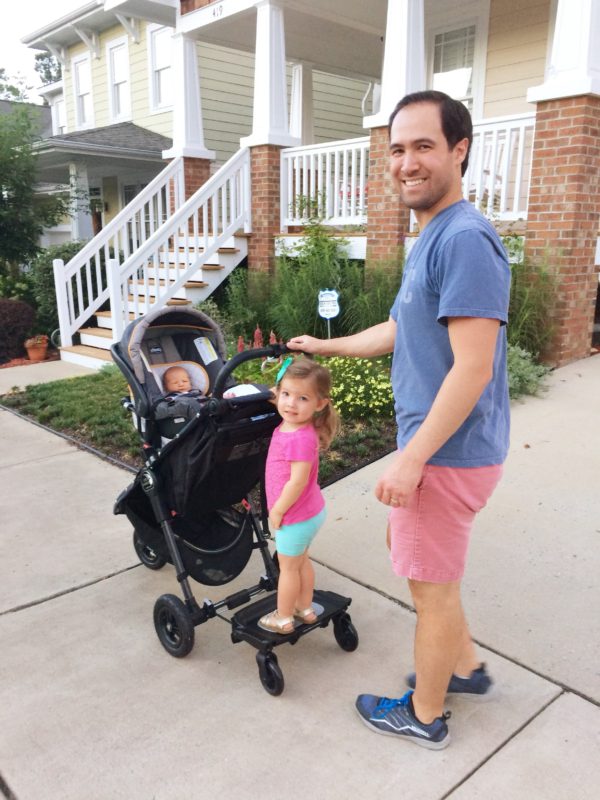
When and how did June first meet Shep?
My Mom arrived the night before my c-section and took care of June while we were in the hospital. June came to visit for the first time the afternoon of our second day in the hospital, a little more than 24 hours after Shep was born. This turned out to be good timing – we had had a change to get to know Shep, but I was still enjoying the effects of the morphine drip from the surgery. That evening, the effects wore off (my hospital gave morphine for 24 hours after surgery), and my transition onto just painkillers was rocky, so hours 30-40ish were the roughest for me, pain-wise.
June brought a little stuffed bear to the hospital as her gift to Shep, and she was delighted that he had a gift for her to unwrap, too – a stuffed Jellycat pig :) Not sure how much of a factor that played in getting their relationship off on the right foot, but it was sweet!
June was able to climb up in the bed with me and snuggle and take a look at Shep. It was a short but sweet visit!
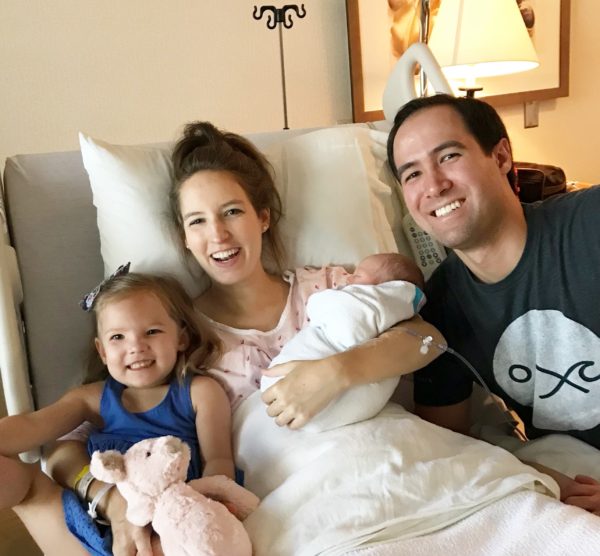
Which was the harder transition – 0 to 1 or 1 to 2?
1 to 2, only because 0 to 1 was hardly a blip on our radar. I am exaggerating, of course – there were many adjustments when June entered our lives! – but in every way she made things easy for us. Shep did and does, too, but in most things he is just a smidge more challenging than she was.
For us, one child (especially the child we got) was easily absorbed into the life we already had. She was easy to take anywhere, would snooze in her car seat under the table at a restaurant until six months or so, and didn’t really change much about how we spent our days and nights and weekends.
The verbal vault from talking about “June” to talking about “the kids” is representative of the leap forward in our life as parents. Outings require just a bit more forethought, scheduling has become just a bit more difficult with two routines to take into account, and going about our daily lives has become just a bit more complicated. More about all that in part two :)
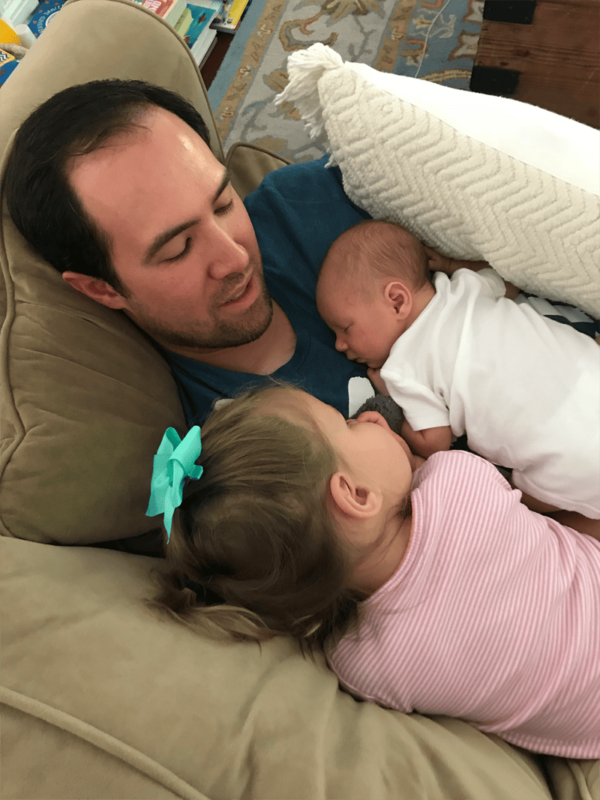
How did you function with a toddler while running on no sleep?
Don’t hate me, but I never felt like I was functioning on no sleep. Yes, most nights I was getting up two or three times, but Shep (like June) was good about nursing and then falling back to sleep pretty easily for his first few months of life. John and I were also able to fall back asleep when he did, so sitting up in bed for two or three half-hour stints overnight didn’t phase me too much.
June also doesn’t wake up super-early – usually between 7:30 and 8 if left to her own devices – and John would usually graciously get out of bed when she woke up and get her started on breakfast so I could sleep in a little bit longer.
Also helpful: from the beginning, we would always try to put Shep down for a nap during June’s afternoon nap. It didn’t always work, but if both kiddos were asleep, you can bet both parents were asleep, too :)
Okay – I think we’ll leave it there for part one! If you have a question I haven’t answered yet, feel free to drop it in the comments! I hope this has been helpful!!
More in this series:
Part Two (gear)
Part Three (finances, blessings, challenges, bedtime, what’s most different, and more!)
Affiliate links are used in this post!
5 April 2019
For as much chatter as there is on the internet about kids, a few important topics get almost no air time. Wisdom about raising teenagers is one of them, and in my experience, daycare is another.
It’s not as “sparkly” of a topic as gift picks or product faves, and it’s not as universal as thoughts on feeding a toddler, but it is without a doubt one of the most important things to “get right” as a parent – and thus, is a topic worthy of sharing on if my experiences might be helpful for one of you. If you’re a new parent or perhaps not even pregnant yet (but looking ahead to the day when you are), and daycare is part of your care plan, this post is for you, with love from me!
Specifically, this post is for those who have decided daycare is the right fit for their family, and are now trying to decide between centers. Over the last three years we’ve toured 9 different schools and had children enrolled in three – a nationwide franchise with traditional hours, a local company with several sites in the Triangle and traditional hours, and an independent Montessori with school-based hours (8:30-4:30). We’ve had great experiences with all of them, and through the searches to land at these three, have identified what to look for to know if a school will be a great fit for our family.
Of course, everyone has different priorities when it comes to care for their kids, and the things we care about most might not match up with your priorities. As an important first step before you begin your search, I’d take some time to write out what matters most to you so you can judge each center against your criteria. Looking up the state rating, if your state has one, is a good place to start, but there is so much more to take into consideration!
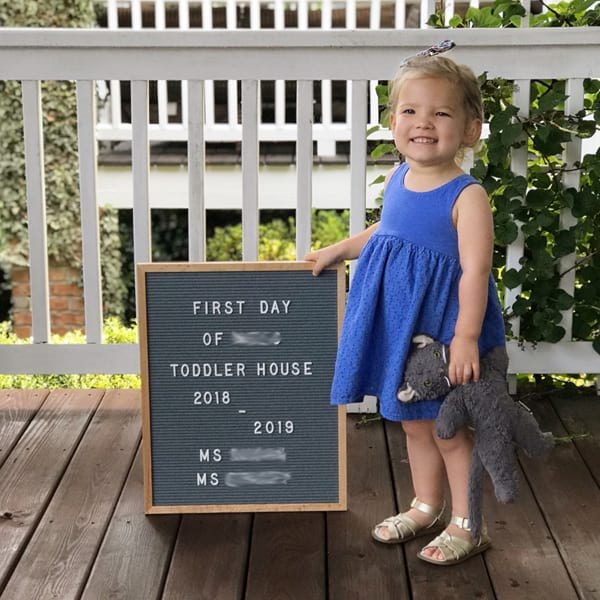
Here are a few of the things we look for in a daycare/preschool, in no particular order:
1. When we visit, the first thing we talk about should be what we’re looking for in care for our child. In nine visits over the last few years, only three have done this — at any point in the conversation. Asking what we care about tells me they’re interested in building a relationship, that they’re invested in my individual child, and that they’re not simply going to provide a one-size-fits-all service.
2. Experience over degrees. This is a tip from my Mom, who was the director of a preschool for sixteen years. She always said she would hire a teacher with experience and passion over someone with a degree any day. I particularly think this is important for a teacher in an infant or toddler classroom, where I’d much rather have someone caring for my baby who’s raised their own babies and has years of experience to draw on than someone fresh out of school.
3. Management that treats their teachers well. If I’m paying more than my mortgage for childcare, I would like to know that not only am I thrilled with the care my child is receiving, but that her teachers are also being taken care of. For basic human reasons, yes, but also because well-compensated teachers who feel they are valued will be happier, which will lead them to do their job well, and will lead to less turnover, leading to a more stable environment for my child and for communication. To gauge this, you can ask outright what benefits their teachers receive, and of course you can also ask how long the teachers have been with the school.
4. Cozy rooms (balanced with cleanliness). Heck yes I understand the need to make it as easy as possible to keep classrooms clean and germ-free — but I also don’t want to feel like my child is spending the day in a linoleum box. Both June’s and Shep’s infant classrooms had plenty of soft surfaces, pleasing decor, and cozy nooks while also keeping them safe and healthy.
5. Lack of technology. It’s funny – most centers advertise the technology incorporated into the curriculum as a selling point, but it should come as no surprise that I was looking for the exact opposite. June is now at a Montessori school where there are no screens of any kind, and it’s heaven.
6. A commitment to outside time. Almost all schools have outside time every day (I think it’s a law in North Carolina!), but what do their outdoor spaces look like? What emphasis do they place on it? What are the kids doing outside? We were particularly looking for playgrounds that had natural surfaces – grass, mulch, etc. – which was surprisingly hard to find.
7. Flexible hours. With most traditional center hours (7am-6pm), we were paying for far more hours than we needed. We were SO happy to find June’s current school, which, among a million other wonderful things, allows us to pay for only the hours we need. This set-up seems to be rare, but is so worth seeking out if you’re in the same situation!
8. Teachers we love in the classroom we’ll be in. As long as the school is generally decent, in my opinion, the teachers matter more than the “brand” or experience of the school at large. The teachers are the ones caring for your child every day, and the people with whom you’ll be communicating. You should feel totally confident in who they are and their ability to love on your child. Yes, staff can turnover, and you’ll get new teachers as your child grows – but you can always reevaluate, if necessary, at that point.
And that leads me to a final piece of encouragement: when choosing a daycare (or, really, any kind of school), make the best decision for now, not forever. If you realize your child needs something different, or your priorities change, you can always switch schools. The right school at six months might not be the right school at three years, and that’s okay! You’re not making a decision for all of time – just for right now. You’re doing a great job, mama :)
Any tips to add, friends? How did you know your childcare was the one? Have any other childcare questions you’d like me to answer?
P.S. We lucked out with getting June into an infant program immediately because the center had recently opened – and then were shocked when we were 16th on a waiting list for Shep in April, for a November spot!! You do need to start your search early in most markets – I’d recommend in the second trimester.












